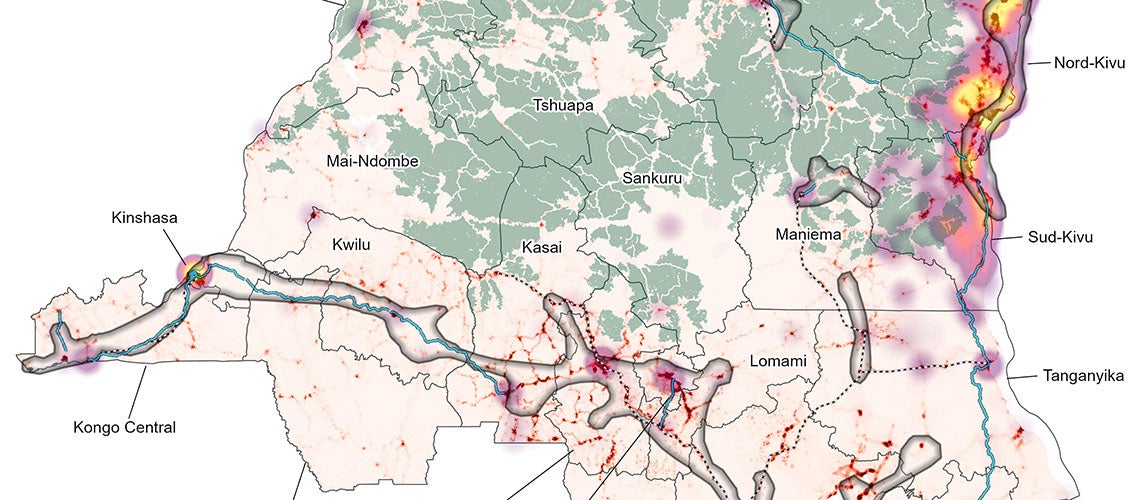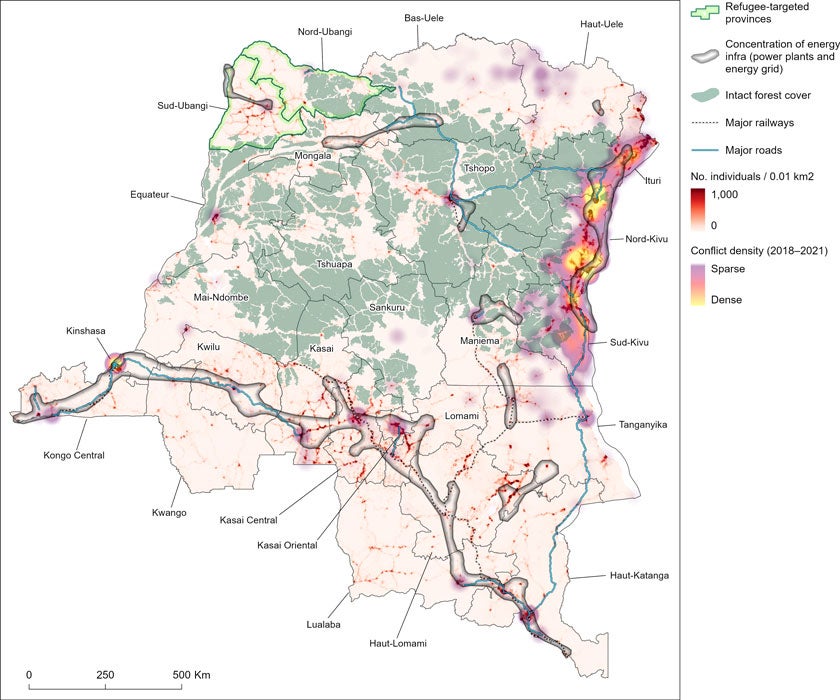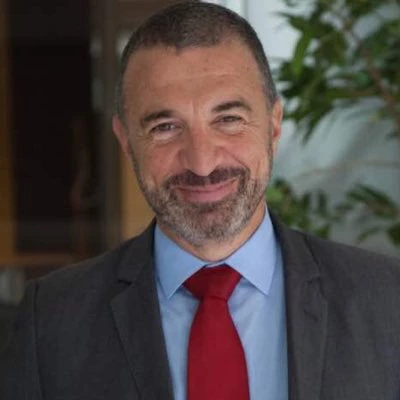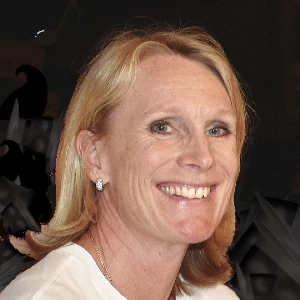 DRC population, infrastructure, conflict, and forest mapping (World Bank, 2022)
DRC population, infrastructure, conflict, and forest mapping (World Bank, 2022)
The lives of most Congolese have not improved since the Congo Wars ended 20 years ago. Persistent conflict and slow economic progress caused living standards to decline year after year. Most people (73%) live on less than $1.90 a day, and, in 2020, there were 20 million more poor citizens than in 2003. Population growth, combined with weak economic growth resulted in a 60% decline in gross domestic product per capita in 2020 compared to 1960.
This is occurring in the Democratic Republic of Congo (DRC), a country larger than Western Europe, rich with natural resources, holding more than half of the world’s cobalt reserves, essential to the manufacture of cell phones and car batteries, as well as large-scale hydropower potential. DRC also has one of the biggest rainforests globally, representing the second largest carbon sink in the world.
At the same time, there is reason for hope for DRC’s 90 million people.
We are witnessing early signs of a new social contract emerging between the government and citizens. The World Bank intends to help foster this contract by strengthening accountability and transparency and making investments that will improve access to services. This support is laid out in a new Country Partnership Framework (CPF) for DRC for 2022-26 (see Executive Summary).
Implementation of the government’s free primary education policy has opened doors for millions of children who previously could not go to school—a commitment the World Bank is supporting through a large-scale primary education project. While COVID-19 (coronavirus) containment measures have interfered with this work, three million more children went to school in 2021 than in previous years.
The government has renewed its stabilization efforts in Eastern Congo, which will be supported under this new framework. World Bank investments will aim to reduce fragility and conflict through better connectivity—passable, paved roads, and increased digitalization–as well as greater access to water and electricity services. This work will be enhanced by attracting and leveraging private capital in support of development efforts, including in solar power generation that will support universal access to electricity.
Governance reforms will be integrated into all World Bank engagements, from support for strengthened public financial management at central and provincial levels to improved economic governance and transparency of state enterprises in water, electricity, and mining. Investment lending with results-based modalities is already being used in support of the free primary education policy.
The World Bank Group is committed to reaching the greatest number of people possible in this vast territory. Most Congolese live along two heavily populated corridors, one running north to south along the Great Lakes region, the other west to east. Developing the country can only happen by concentrating efforts along these corridors—which are also the most vulnerable to conflict. These corridors (shown in the map below) are replete with resources. Yet, this is where the most volatile hotspots are, and where most poor people live.
DRC population, infrastructure, conflict, and forest mapping (World Bank, 2022)

Road connectivity will be improved in the places most affected by conflict and violence—to connect people and markets and reduce exclusionary dynamics that are linked to fragility. Investments in road infrastructure will focus on the two national corridors with the aim of adding 1,500 kilometers of paved roads. Another 4,000 kilometers of rural roads will be rehabilitated.
DRC’s forests store the equivalent of 85 billion tons of carbon dioxide—roughly equal to three years of global energy-related Carbon Dioxide emissions. To reduce pressure on and protect the forest—and its benefits—World Bank investments support a shift in cultivation and encourage alternative livelihoods. Approaches will be scaled up to strengthen the resilience of landscapes and communities surrounding the forest, while incentivizing improved forest governance.
Reduced conflict through education and social protection
The World Bank Group reengaged with DRC after the wars ended in 2003. The work focused more on infrastructure (50% of engagements) than strengthening institutional capacity, human development, or support for critical governance reforms. Under the new CPF, there is a shift toward human development and a rebalancing of financing toward education and social protection.
Investments in girls’ learning and women’s empowerment are designed to help girls stay in school and transition into secondary schooling; increase access to sexual reproductive health education and services; access second chance education; and strengthen women’s financial inclusion. The approach to gender-based violence will focus on reducing violence as well as access for survivors to interventions and support.
The World Bank will also support the government’s efforts to establish a countrywide social safety net system that targets poor, vulnerable, and conflict-affected people, including Internally Displaced People and refugees. The new approach will bring investments of close to US$1 billion in social protection activities, benefiting about 1.2 million people, 40% of whom are women.
The work ahead is ambitious and focused more than ever on people. It is not without risks. However, the goal is to bring a new quality of life to the average family in DRC. We are committed to change for DRC’s 90 million people.




Join the Conversation